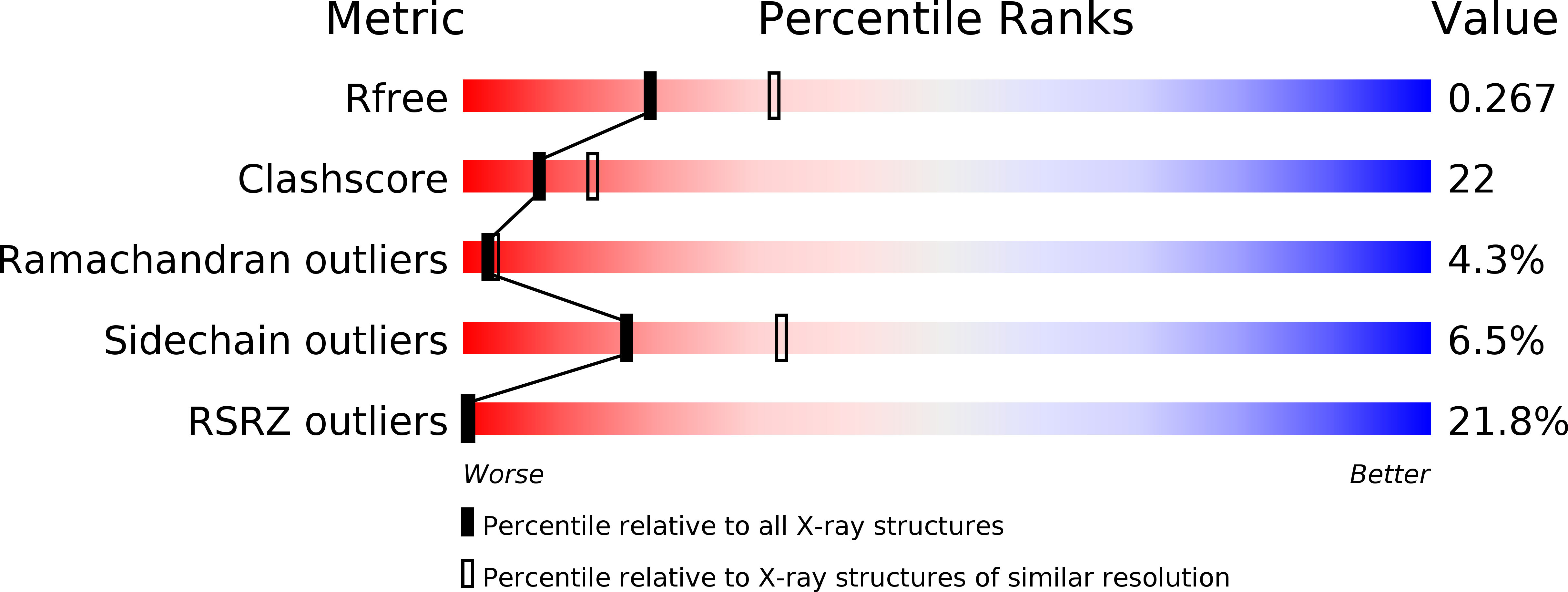Structural basis for autorepression of retinoid X receptor by tetramer formation and the AF-2 helix.
Gampe Jr., R.T., Montana, V.G., Lambert, M.H., Wisely, G.B., Milburn, M.V., Xu, H.E.(2000) Genes Dev 14: 2229-2241
- PubMed: 10970886
- DOI: https://doi.org/10.1101/gad.802300
- Primary Citation of Related Structures:
1G1U, 1G5Y - PubMed Abstract:
The 9-cis-retinoic acid receptors (RXRalpha, RXRbeta, and RXRgamma) are nuclear receptors that play key roles in multiple hormone-signaling pathways. Biochemical data indicate that, in the absence of ligand, RXR can exist as an inactive tetramer and that its dissociation, induced by ligand, is important for receptor activation. In this article we report the inactivated tetramer structures of the RXRalpha ligand-binding domain (LBD), either in the absence of or in the presence of a nonactivating ligand. These structures reveal that the RXR LBD tetramer forms a compact, disc-shaped complex, consisting of two symmetric dimers that are packed along helices 3 and 11. In each monomer, the AF-2 helix protrudes away from the core domain and spans into the coactivator binding site in the adjacent monomer of the symmetric dimer. In this configuration, the AF-2 helix physically excludes the binding of coactivators and suggests an autorepression mechanism that is mediated by the AF-2 helix within the tetramer. The RXR-tetramer interface is assembled from amino acids that are conserved across several closely related receptors, including the HNF4s and COUP transcription factors, and may therefore provide a model for understanding structure and regulation of this subfamily of nuclear receptors.
Organizational Affiliation:
GlaxoWellcome Research and Development, Research Triangle Park, North Carolina 27709, USA.














